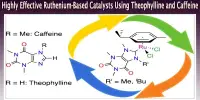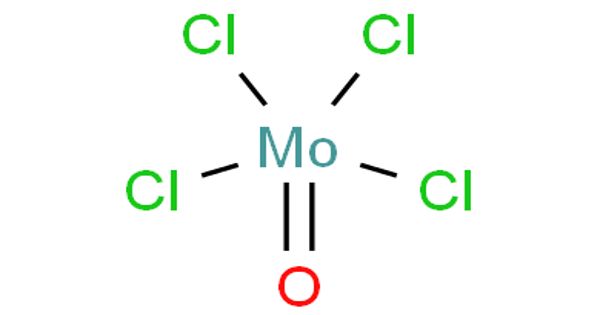Since its invention several millennia ago, concrete has played an important role in the advancement of civilization, finding use in a wide range of construction applications ranging from bridges to buildings. Despite centuries of innovation, its primary function has remained structural. A multi-year effort led by MIT Concrete Sustainability Hub (CSHub) researchers in collaboration with the French National Center for Scientific Research (CNRS) aimed to change that. Their collaboration has the potential to make concrete more sustainable by incorporating novel functionalities, specifically electron conductivity. Concrete with electron conductivity could be used for a variety of new applications ranging from self-heating to energy storage.
Their method is based on the careful incorporation of highly conductive nanocarbon materials into the cement mixture. They validate this approach in a paper published in Physical Review Materials, while also presenting the parameters that govern the material’s conductivity.
Nancy Soliman, the paper’s lead author and a postdoc at the MIT CSHub, believes that this research has the potential to add an entirely new dimension to a material that is already widely used in construction. “It’s a first-order model of the conductive cement,” she says. “It will also bring [the knowledge] required to encourage the scale-up of these types of [multifunctional] materials.”
Researchers promises to make concrete more sustainable by adding novel functionalities—namely, electron conductivity. Electron conductivity would permit the use of concrete for a variety of new applications, ranging from self-heating to energy storage.
From the nanoscale to the state-of-the-art
Nanocarbon materials have proliferated over the last several decades due to their unique combination of properties, the most notable of which is conductivity. Scientists and engineers have previously proposed the development of materials that, when incorporated within cement and concrete, can impart conductivity.
Soliman wanted to make sure the nanocarbon material they chose was affordable enough to be produced on a large scale for this new project. She and her colleagues decided on nanocarbon black, a low-cost carbon material with high conductivity. They discovered that their conductivity predictions were correct.
“Concrete is naturally an insulator,” Soliman explains, “but when we add nanocarbon black particles, it transforms from an insulator to a conductive material.” Soliman and her colleagues discovered that by incorporating nanocarbon black at only 4% of the volume of their mixtures, they could reach the percolation threshold, the point at which their samples could carry a current.
They discovered that this current had an interesting side effect: it could generate heat. This is due to a phenomenon known as the Joule effect. According to Nicolas Chanut, a co-author on the paper and a postdoc at MIT CSHub, Joule heating (or resistive heating) is caused by interactions between moving electrons and atoms in the conductor. “When accelerated electrons in an electric field collide with an atom, they exchange kinetic energy, inducing vibration of the atoms in the lattice, which manifests as heat and a rise in temperature in the material.”
They discovered that even a low voltage—as low as 5 volts—could raise the surface temperatures of their samples (approximately 5 cm3 in size) to 41 degrees Celsius (around 100 degrees Fahrenheit). While a standard water heater may reach comparable temperatures, it is important to consider how this material would be used in comparison to traditional heating strategies.
“This technology has the potential to be ideal for radiant indoor floor heating,” says Chanut. “Indoor radiant heating is typically accomplished by circulating heated water in pipes that run beneath the floor. However, building and maintaining this system can be difficult. However, when the cement itself is used as a heating element, the heating system becomes easier to install and more reliable. Furthermore, due to the very good dispersion of the nanoparticles in the material, the cement provides more homogeneous heat distribution.”
Outdoors, nanocarbon cement could have a variety of applications. Nanocarbon cement, according to Chanut and Soliman, could alleviate durability, sustainability, and safety concerns if used in concrete pavements. The use of salt for de-icing is at the root of many of these concerns.
“There is a lot of snow in North America. To remove the snow from our roads, de-icing salts must be used, which can damage the concrete and contaminate groundwater “Soliman makes a point. The heavy-duty trucks used to salt roads emit a lot of pollution and are expensive to operate.
Nanocarbon cement, by enabling radiant heating in pavements, could be used to de-ice pavements without the use of road salt, potentially saving millions of dollars in repair and operation costs while addressing safety and environmental concerns. This technology could be especially useful in applications where maintaining exceptional pavement conditions is critical, such as airport runways.

Tangled wires
While this cutting-edge cement provides elegant solutions to a variety of problems, achieving multifunctionality presented a number of technical challenges. For example, without a way to align the nanoparticles into a working circuit—known as volumetric wiring—within the cement, their conductivity would be useless. Tortuosity, a property known as tortuosity, was investigated by researchers to ensure ideal volumetric wiring.
“Tortuosity is a concept we introduced by analogy from the field of diffusion,” explains Franz-Josef Ulm, the paper’s leader and co-author, a professor in the MIT Department of Civil and Environmental Engineering, and the faculty advisor at CSHub. “It has previously described how ions flow. It is used in this work to describe the flow of electrons through the volumetric wire.”
Ulm uses the example of a car traveling between two points in a city to explain tortuosity. While the distance between those two points may be two miles as the crow flies, the actual distance driven may be greater due to the circuitous nature of the streets.
The same holds true for electrons passing through cement. The path they must take within the sample is always longer than the sample’s length. Tortuosity is defined as the length of that path. To achieve optimal tortuosity, the quantity and dispersion of carbon must be balanced. If the carbon is dispersed too widely, the volumetric wiring will become sparse, resulting in high tortuosity. Similarly, if the sample lacks sufficient carbon, the tortuosity will be too great to form a direct, efficient wiring with high conductivity.
Even large amounts of carbon may be counterproductive. At some point, conductivity will stop improving and, if implemented at scale, will only increase costs. They sought to optimize their mixes as a result of these complexities. “We discovered that by fine-tuning the volume of carbon, we can achieve a tortuosity value of 2,” Ulm says. “This means the electrons’ path is only twice as long as the sample.”
Ulm and his colleagues saw the importance of quantifying such properties. Their recent paper sought to demonstrate not only the feasibility of multifunctional cement, but also its viability for mass production.
“The key point is that an engineer needs a quantitative model to pick up on things,” Ulm explains. “Before combining materials, you should be able to predict certain repeatable properties. That is precisely what this paper outlines; it distinguishes between what is caused by boundary conditions—[extraneous] environmental conditions—and what is caused by fundamental mechanisms within the material.”
Soliman, Chanut, and Ulm hope to provide engineers with exactly what they need to implement multifunctional cement on a larger scale by isolating and quantifying these mechanisms. The path they’ve blazed is promising—and, thanks to their efforts, shouldn’t be too difficult.
















